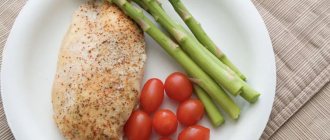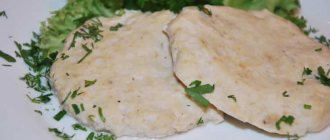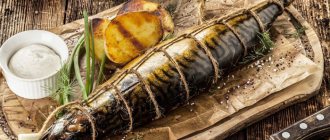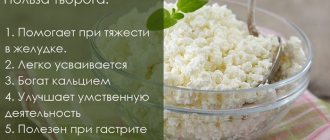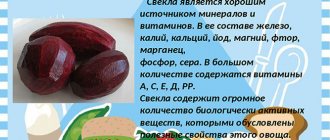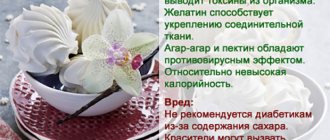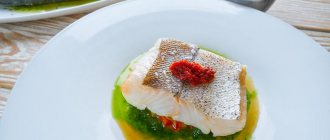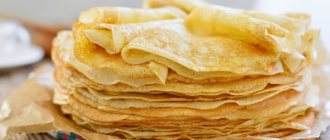The calorie content of a cutlet is not at all a reason not to eat it
Cutlets, like many other popular dishes today, were invented in France. But they looked a little different than we were used to, since the word “cutlet” meant nothing more than a rib. Because the first cutlets were prepared in this way: they took a pork or beef rib, wrapped it in meat pulp to form a flat cake and then fried it. The rib was needed to make the cutlet more comfortable to hold in your hands while eating. The calorie content of the cutlet was quite high even at that time.
With the advent of cutlery, the need for a bone disappeared, and the cutlets themselves began to improve: the meat began to be beaten, breaded and cooked in a variety of ways. Therefore, ideally, a classic cutlet is what we usually call a chop. And what we usually call a cutlet appeared in Russia during the time of Peter I - it is a fried flatbread made from minced meat.
Today, the cutlet is an almost integral part of the daily diet. And now cutlets are made not only from pork and beef, but also from other products, including fish, potatoes and even onions. The calorie content of a cutlet is usually calculated before the process of heat treatment, that is, in its raw form. When a cutlet is fried, its calorie content increases due to oil. So, the calorie content of a cutlet in its raw form is about 240 Kcal per 100 grams of product. After frying it in sunflower oil, the calorie content may increase, since 100 g of sunflower oil contains 900 Kcal.
One of the most favorite types of cutlets are Kiev cutlets. Thanks to a piece of butter inside, the calorie content of a chicken Kiev cutlet made from chicken reaches 445 Kcal, and beef and pork cutlets are even higher in calories.
Kiev cutlets take a little longer to prepare than regular cutlets. To prepare 4 chicken Kiev cutlets you will need: 500 g of minced chicken or chicken breasts, which then need to be rolled into minced meat; 80 g butter; two eggs, breadcrumbs; flour; vegetable oil. The minced meat should be salted and pepper to taste and divided into 4 equal portions. Make a flat cake from each part, put a piece of butter in the middle. Wrap the flatbread and shape it. After this, the cutlet needs to be rolled in flour, then in eggs, which must first be beaten a little with a fork until smooth, then roll the cutlet in breadcrumbs. Next, you need to roll it again in the egg and again in breadcrumbs. This is the so-called double breading. It retains the shape of the cutlet and does not allow the oil to leak out of it. These cutlets are deep-fried over high heat. After quickly frying the cutlets, place them on a baking sheet and place them in the oven for 15 minutes, preheated to 180 degrees. Despite the fact that the calorie content of a chicken Kiev cutlet is quite high, this cutlet contains a lot of vitamins and minerals that are beneficial for the body.
The calorie content of pike cutlets is lower than Kiev cutlets. Pike cutlets contain 200-260 kcal per 100 g of product. Pike cutlets are prepared in the same way as regular cutlets, only instead of minced meat they use minced pike fillet. The benefits of pike cutlets are such that pike, like any other fish, contains protein that is beneficial to the body. But fish protein is absorbed by the body twice as quickly as meat protein. And even despite the fact that the calorie content of pike cutlets is quite high, vitamins (B6 and B12), amino acids (lysine, taurine, methionine, tryptophan) and minerals (zinc, iodine, phosphorus, iron, copper, manganese) are contained in this fish, they make cutlets from it as healthy as possible. These substances can prevent many diseases, such as thyroid dysfunction, thrombophlebitis, and blood diseases.
How many calories are in fried, baked and steamed meat and fish cutlets?
Cutlets made even from the same type of meat will have different calorie content. For example, the calorie content of chicken cutlets made from the meat of the entire chicken carcass along with the skin is 190 cal per 100 grams. A cutlet made only from chicken breast will have a low calorie content - no more than 115 kcal. The calorie content also depends on the products that are additionally added to the minced meat: lard, milk, bread, eggs, and so on.
Remember:
The more products you add to the cutlet mince besides meat, the higher the calorie content of the cutlets at the end.
If you need to make the minced meat more elastic, but you don’t want to add milk and bread, then you can add a little water. Instead of whole eggs, use just the whites. This will help reduce calories.
Meat cutlets contain from 120 kcal to 360 kcal, depending on the type of meat. In fish, depending on the type of fish, from 110 kcal to 270 kcal.
Now let's take a closer look at how many calories are in fried, baked and steamed meat and fish cutlets.
Which cutlets are healthier and healthier for weight loss?
When a person is on a diet and needs to lose weight, it is important to know which foods can be eaten and which ones it is better to refrain from eating. Which cutlets are healthier and healthier for weight loss?
- Nutritionists around the world say that fried food is harmful to health, as it contains many carcinogens and has a pathological risk of cancer.
- The high fat content in fried meat leads to heart and vascular diseases.
- Frying greatly increases the calorie content of even the most dietary meat : turkey, chicken or beef. Therefore, steamed cutlets are healthier and healthier for weight loss.
- If we talk about meat, then pork has a lot of fat . People who want to lose weight should not eat pork cutlets.
- Cutlets made from pike and pink salmon are high in calories - these are fatty fish.
Conclusion: For weight loss and health, steamed cutlets made from chicken breast or turkey fillet are healthier. Among the fish you should give preference: hake, cod and pollock.
Monitor your weight and health to save yourself from chronic diseases associated with blood vessels and heart.
Recipe for Chicken Kiev with cheese. Calorie, chemical composition and nutritional value.
Nutritional value and chemical composition of Kiev cutlets with cheese.
The table shows the nutritional content (calories, proteins, fats, carbohydrates, vitamins and minerals) per 100 grams of edible portion.
| Nutrient | Quantity | Norm** | % of the norm in 100 g | % of the norm in 100 kcal | 100% normal |
| Calorie content | 195.3 kcal | 1684 kcal | 11.6% | 5.9% | 862 g |
| Squirrels | 21.8 g | 76 g | 28.7% | 14.7% | 349 g |
| Fats | 9.8 g | 56 g | 17.5% | 9% | 571 g |
| Carbohydrates | 4.6 g | 219 g | 2.1% | 1.1% | 4761 g |
| Organic acids | 0.1 g | ~ | |||
| Alimentary fiber | 1.7 g | 20 g | 8.5% | 4.4% | 1176 g |
| Water | 59.6 g | 2273 g | 2.6% | 1.3% | 3814 g |
| Ash | 2.081 g | ~ | |||
| Vitamins | |||||
| Vitamin A, RE | 45.9 mcg | 900 mcg | 5.1% | 2.6% | 1961 |
| Retinol | 0.026 mg | ~ | |||
| alpha carotene | 1.795 mcg | ~ | |||
| beta carotene | 0.156 mg | 5 mg | 3.1% | 1.6% | 3205 g |
| beta Cryptoxanthin | 18.299 mcg | ~ | |||
| Lycopene | 0.029 mcg | ~ | |||
| Lutein + Zeaxanthin | 59.575 mcg | ~ | |||
| Vitamin B1, thiamine | 0.112 mg | 1.5 mg | 7.5% | 3.8% | 1339 g |
| Vitamin B2, riboflavin | 0.16 mg | 1.8 mg | 8.9% | 4.6% | 1125 g |
| Vitamin B4, choline | 21.28 mg | 500 mg | 4.3% | 2.2% | 2350 g |
| Vitamin B5, pantothenic | 0.214 mg | 5 mg | 4.3% | 2.2% | 2336 g |
| Vitamin B6, pyridoxine | 0.094 mg | 2 mg | 4.7% | 2.4% | 2128 g |
| Vitamin B9, folates | 11.546 mcg | 400 mcg | 2.9% | 1.5% | 3464 g |
| Vitamin B12, cobalamin | 0.179 mcg | 3 mcg | 6% | 3.1% | 1676 g |
| Vitamin C, ascorbic acid | 3.94 mg | 90 mg | 4.4% | 2.3% | 2284 g |
| Vitamin D, calciferol | 0.213 mcg | 10 mcg | 2.1% | 1.1% | 4695 g |
| Vitamin E, alpha tocopherol, TE | 3.002 mg | 15 mg | 20% | 10.2% | 500 g |
| beta tocopherol | 0.002 mg | ~ | |||
| gamma tocopherol | 0.044 mg | ~ | |||
| delta tocopherol | 0.006 mg | ~ | |||
| Vitamin H, biotin | 1.774 mcg | 50 mcg | 3.5% | 1.8% | 2818 g |
| Vitamin K, phylloquinone | 4.2 mcg | 120 mcg | 3.5% | 1.8% | 2857 g |
| Vitamin RR, NE | 6.7515 mg | 20 mg | 33.8% | 17.3% | 296 g |
| Niacin | 8.301 mg | ~ | |||
| Betaine | 0.726 mg | ~ | |||
| Macronutrients | |||||
| Potassium, K | 333.2 mg | 2500 mg | 13.3% | 6.8% | 750 g |
| Calcium, Ca | 89.43 mg | 1000 mg | 8.9% | 4.6% | 1118 g |
| Silicon, Si | 1.043 mg | 30 mg | 3.5% | 1.8% | 2876 g |
| Magnesium, Mg | 82.74 mg | 400 mg | 20.7% | 10.6% | 483 g |
| Sodium, Na | 289.86 mg | 1300 mg | 22.3% | 11.4% | 448 g |
| Sera, S | 46.17 mg | 1000 mg | 4.6% | 2.4% | 2166 g |
| Phosphorus, P | 170.1 mg | 800 mg | 21.3% | 10.9% | 470 g |
| Chlorine, Cl | 219.87 mg | 2300 mg | 9.6% | 4.9% | 1046 g |
| Microelements | |||||
| Aluminium, Al | 83 mcg | ~ | |||
| Bor, B | 40.8 mcg | ~ | |||
| Vanadium, V | 0.13 mcg | ~ | |||
| Iron, Fe | 1.993 mg | 18 mg | 11.1% | 5.7% | 903 g |
| Yod, I | 6.73 mcg | 150 mcg | 4.5% | 2.3% | 2229 g |
| Cobalt, Co | 8.827 mcg | 10 mcg | 88.3% | 45.2% | 113 g |
| Lithium, Li | 0.029 mcg | ~ | |||
| Manganese, Mn | 0.3793 mg | 2 mg | 19% | 9.7% | 527 g |
| Copper, Cu | 128.26 mcg | 1000 mcg | 12.8% | 6.6% | 780 g |
| Molybdenum, Mo | 9.083 mcg | 70 mcg | 13% | 6.7% | 771 g |
| Nickel, Ni | 0.695 mcg | ~ | |||
| Rubidium, Rb | 97.1 mcg | ~ | |||
| Selenium, Se | 4.537 mcg | 55 mcg | 8.2% | 4.2% | 1212 g |
| Strontium, Sr | 1.18 mcg | ~ | |||
| Fluorine, F | 112.57 mcg | 4000 mcg | 2.8% | 1.4% | 3553 g |
| Chromium, Cr | 20.63 mcg | 50 mcg | 41.3% | 21.1% | 242 g |
| Zinc, Zn | 1.8243 mg | 12 mg | 15.2% | 7.8% | 658 g |
| Digestible carbohydrates | |||||
| Starch and dextrins | 1.946 g | ~ | |||
| Mono- and disaccharides (sugars) | 1.8 g | max 100 g | |||
| Galactose | 0.001 g | ~ | |||
| Glucose (dextrose) | 0.335 g | ~ | |||
| Maltose | 0.056 g | ~ | |||
| Sucrose | 1.33 g | ~ | |||
| Fructose | 0.338 g | ~ | |||
| Essential amino acids | 0.058 g | ~ | |||
| Arginine* | 1.557 g | ~ | |||
| Valin | 1.113 g | ~ | |||
| Histidine* | 1.079 g | ~ | |||
| Isoleucine | 0.966 g | ~ | |||
| Leucine | 1.691 g | ~ | |||
| Lysine | 2.177 g | ~ | |||
| Methionine | 0.396 g | ~ | |||
| Methionine + Cysteine | 0.737 g | ~ | |||
| Threonine | 0.946 g | ~ | |||
| Tryptophan | 0.325 g | ~ | |||
| Phenylalanine | 0.919 g | ~ | |||
| Phenylalanine+Tyrosine | 1.632 g | ~ | |||
| Nonessential amino acids | 0.135 g | ~ | |||
| Alanin | 1.109 g | ~ | |||
| Aspartic acid | 1.681 g | ~ | |||
| Hydroxyproline | 0.165 g | ~ | |||
| Glycine | 0.788 g | ~ | |||
| Glutamic acid | 2.57 g | ~ | |||
| Proline | 0.891 g | ~ | |||
| Serin | 0.896 g | ~ | |||
| Tyrosine | 0.767 g | ~ | |||
| Cysteine | 0.373 g | ~ | |||
| Sterols (sterols) | |||||
| Cholesterol | 46.37 mg | max 300 mg | |||
| Phytosterols | 0.878 mg | ~ | |||
| beta sitosterol | 11.765 mg | ~ | |||
| Saturated fatty acids | |||||
| Saturated fatty acids | 2.5 g | max 18.7 g | |||
| 14:0 Miristinovaya | 0.012 g | ~ | |||
| 15:0 Pentadecane | 0.001 g | ~ | |||
| 16:0 Palmitinaya | 0.848 g | ~ | |||
| 17:0 Margarine | 0.002 g | ~ | |||
| 18:0 Stearic | 0.39 g | ~ | |||
| 20:0 Arakhinovaya | 0.028 g | ~ | |||
| 22:0 Begenovaya | 0.041 g | ~ | |||
| Monounsaturated fatty acids | 2.632 g | min 16.8 g | 15.7% | 8% | |
| 16:1 Palmitoleic | 0.121 g | ~ | |||
| 17:1 Heptadecene | 0.009 g | ~ | |||
| 18:1 Oleic (omega-9) | 2.183 g | ~ | |||
| 18:1 cis | 0.019 g | ~ | |||
| 20:1 Gadoleic (omega-9) | 0.002 g | ~ | |||
| Polyunsaturated fatty acids | 4.181 g | from 11.2 to 20.6 g | 37.3% | 19.1% | |
| 18:2 Linolevaya | 3.833 g | ~ | |||
| 18:3 Linolenic | 0.02 g | ~ | |||
| 18:3 Omega-3, alpha-linolenic | 0.002 g | ~ | |||
| 20:4 Arachidonic | 0.022 g | ~ | |||
| Omega-6 fatty acids | 3.9 g | from 4.7 to 16.8 g | 83% | 42.5% |
The energy value of Chicken Kiev with cheese is 195.3 kcal.
Primary Source: Created in the application by the user. Read more.
** This table shows the average levels of vitamins and minerals for an adult. If you want to know the norms taking into account your gender, age and other factors, then use the “My Healthy Diet” application.
Video: BUCKWHEAT PATTIES - lean BUCKWHEAT PATTIES without eggs from Marmaladnaya Lisitsa/VEGAN BUCKWHEAT PATTIES
Well, why does it happen in life that healthy is practically synonymous with tasteless, and any delicious food certainly has a detrimental effect on our body? The answer to this question is unlikely to ever be found, but now, taking care of your health and figure, we will tell you what the true calorie content of chicken Kiev is - one of the favorite dishes for several generations of gourmets and gourmets.
So, get ready to hear the harsh truth. Just one cutlet, weighing 100 grams, contains about 300 calories, and therefore nutritionists strongly do not recommend consuming more than 100 - 125 grams per day. this most delicate delicacy. Alas and ah!
Moreover, beware, ulcers, eating Kiev cutlets is strictly prohibited for people during an exacerbation of any diseases of the gastrointestinal tract and kidneys. They are also not recommended for those suffering from atherosclerosis, diabetics and heart patients. This is such a “selyavi”...
And yet... If you are careful, you can treat yourself to a gastronomic delight. If you decide, keep in mind that Kiev cutlets are in perfect harmony with deep-fried potatoes or prunes.
Approximate table of calorie content per 100 grams. product:
- Chicken, flesh without skin - 241 Cal
- Onions – 41 Cal
- Chicken egg - 157 Cal
- Parsley – 45 Cal
- Breadcrumbs - 347 Cal
- Butter - 734 Cal
Fish cutlets are no different in preparation from their counterparts from the meat dishes section. They are light and tasty.
